Nature is full of vibrant colors, but few creatures display them as boldly as frogs and amphibians. These animals often use their bright hues for protection, signaling danger to predators or blending into their colorful environments. Here are some of the most vividly colored frogs and amphibians that stand out in nature.
Strawberry Poison Dart Frog
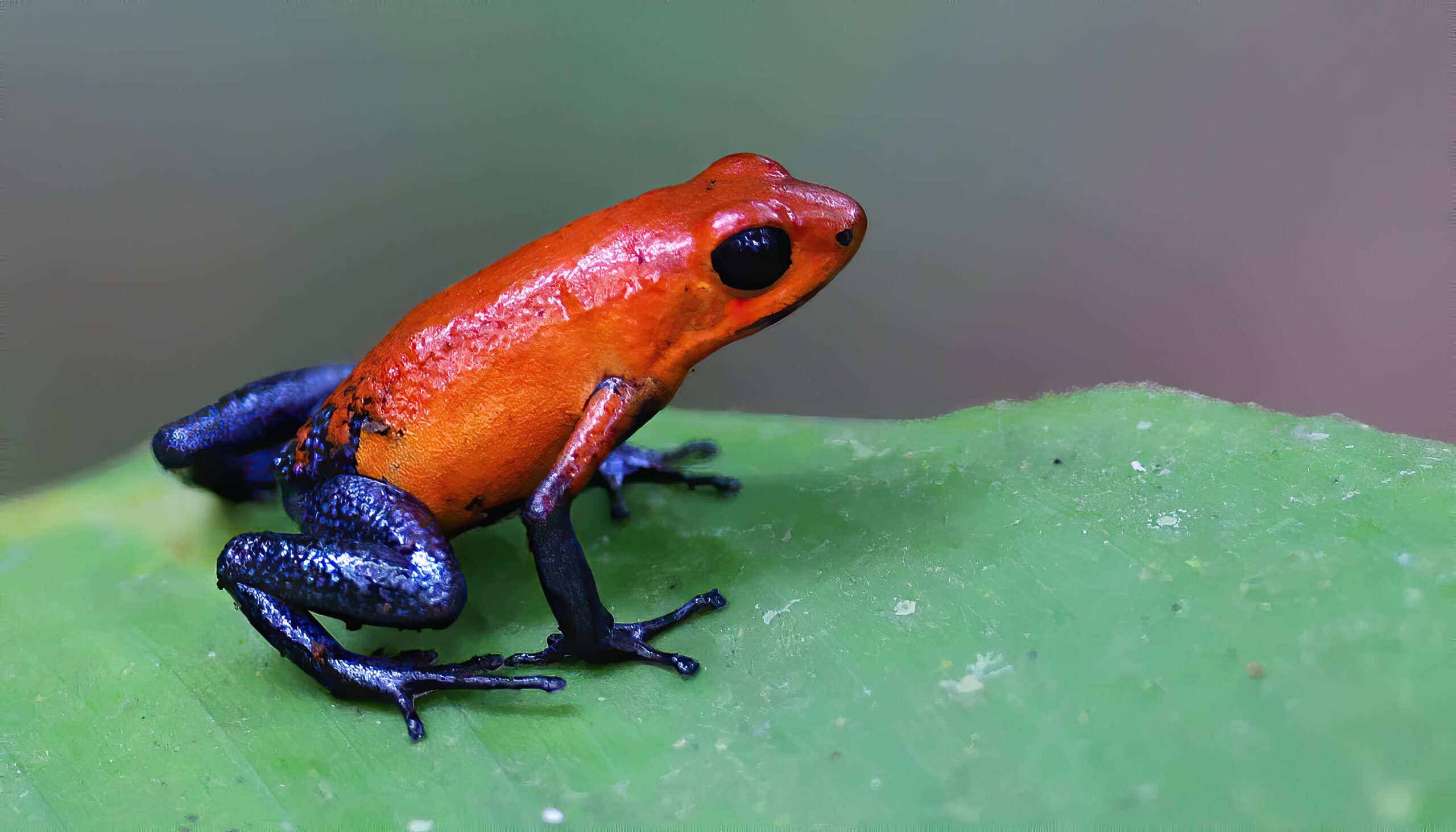
The Strawberry Poison Dart Frog is tiny but vibrant. Its skin boasts a deep red hue that resembles ripe strawberries. Black spots often dot its back, adding to its distinctive look. These frogs live in Central America’s rainforests, using their bright colors to warn predators of their toxicity. Despite their small size, they are highly toxic to animals that try to eat them.
Blue Poison Dart Frog
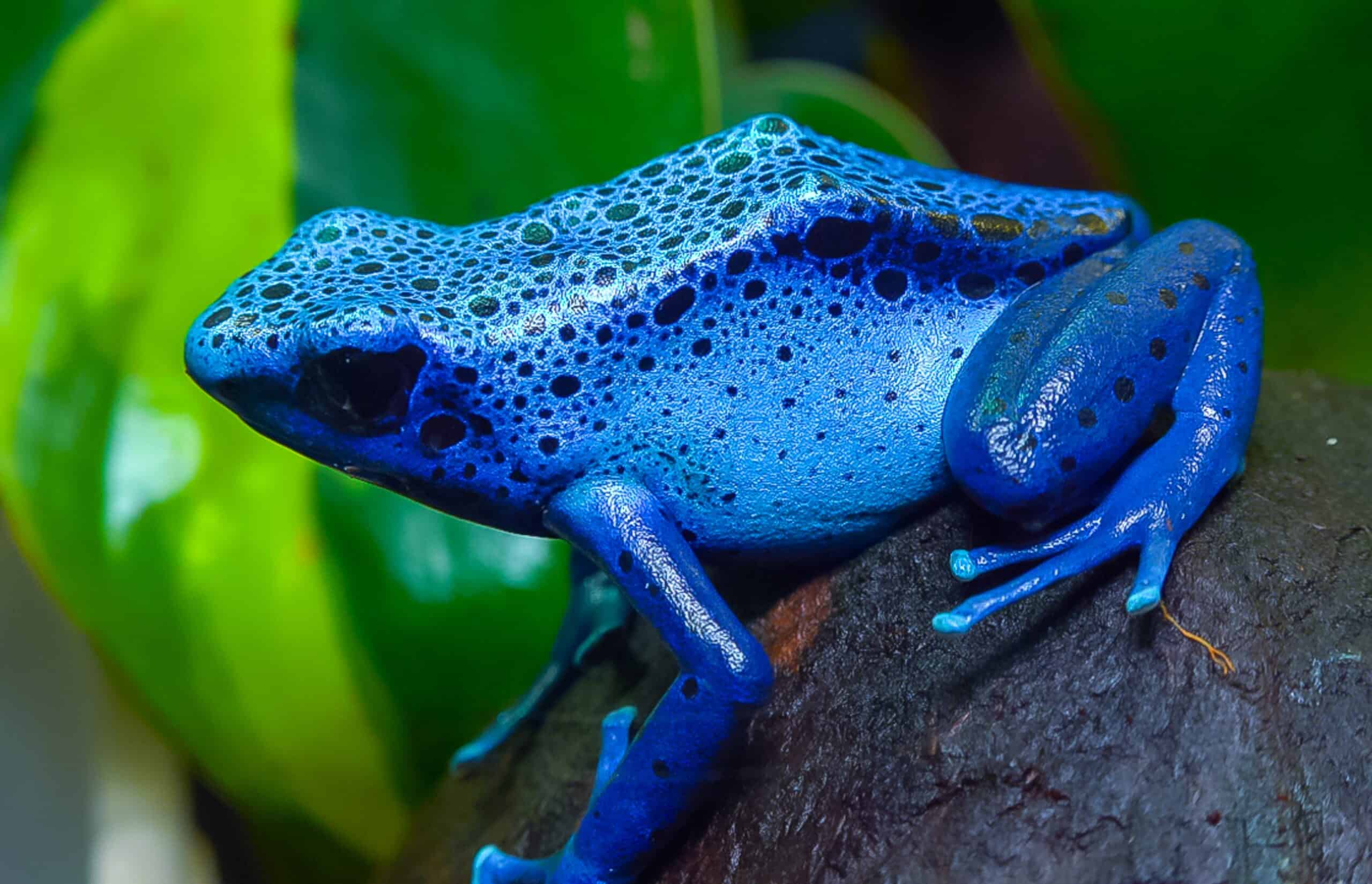
The Blue Poison Dart Frog is striking with its vivid cobalt-blue skin. Its body is covered with tiny black spots, giving it a speckled appearance. Found in the forests of Suriname, these frogs use their bright blue to signal danger. They secrete powerful toxins that can paralyze or kill predators, making them one of the most poisonous species in the world.
Red-eyed Tree Frog
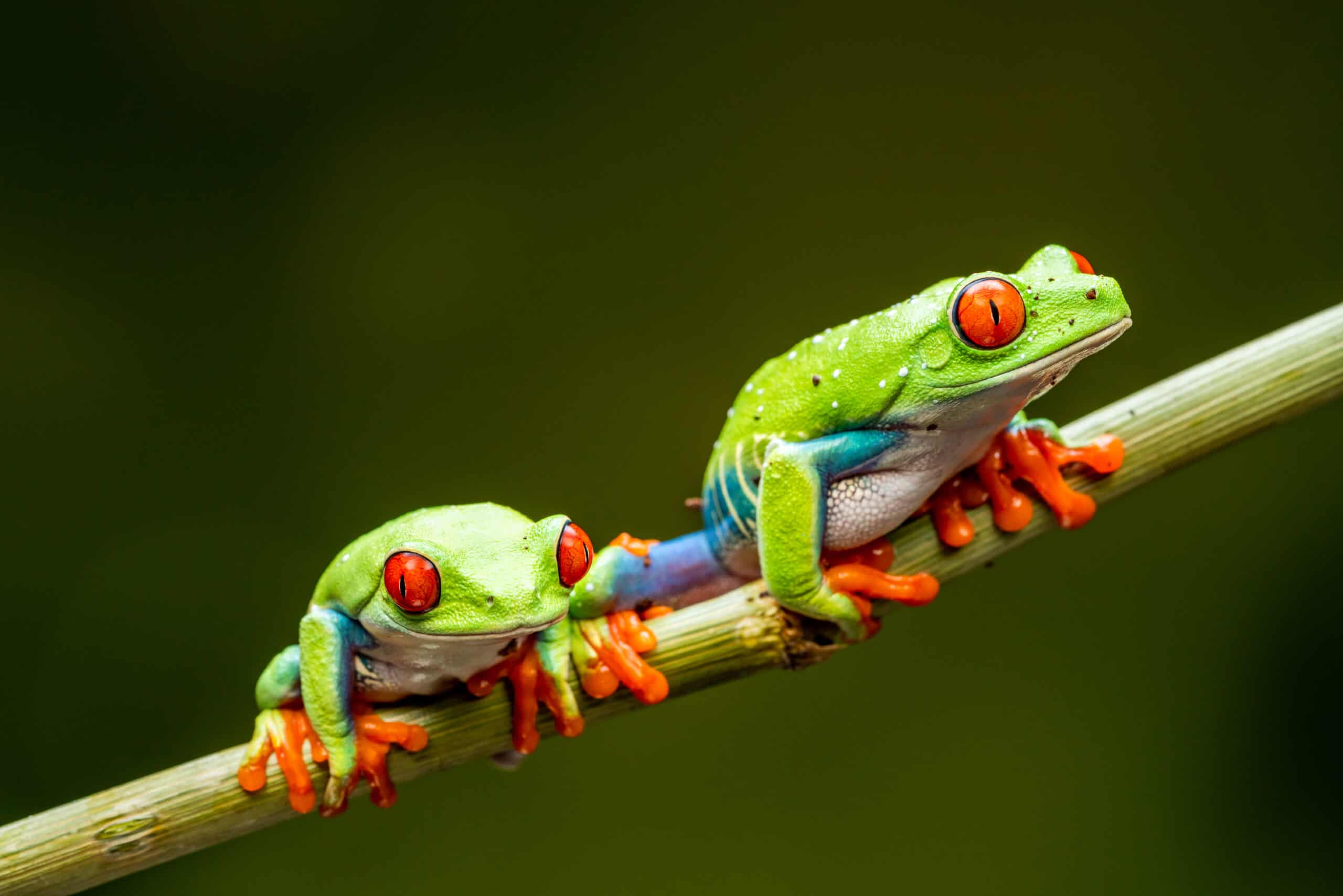
Known for its vivid green body, the Red-eyed Tree Frog also displays bright orange toes. Its most iconic feature is its large, bulging red eyes. This frog lives in the rainforests of Central America and is known for its ability to camouflage. When threatened, it flashes its bright colors to startle predators, giving it time to escape.
Golden Mantella Frog
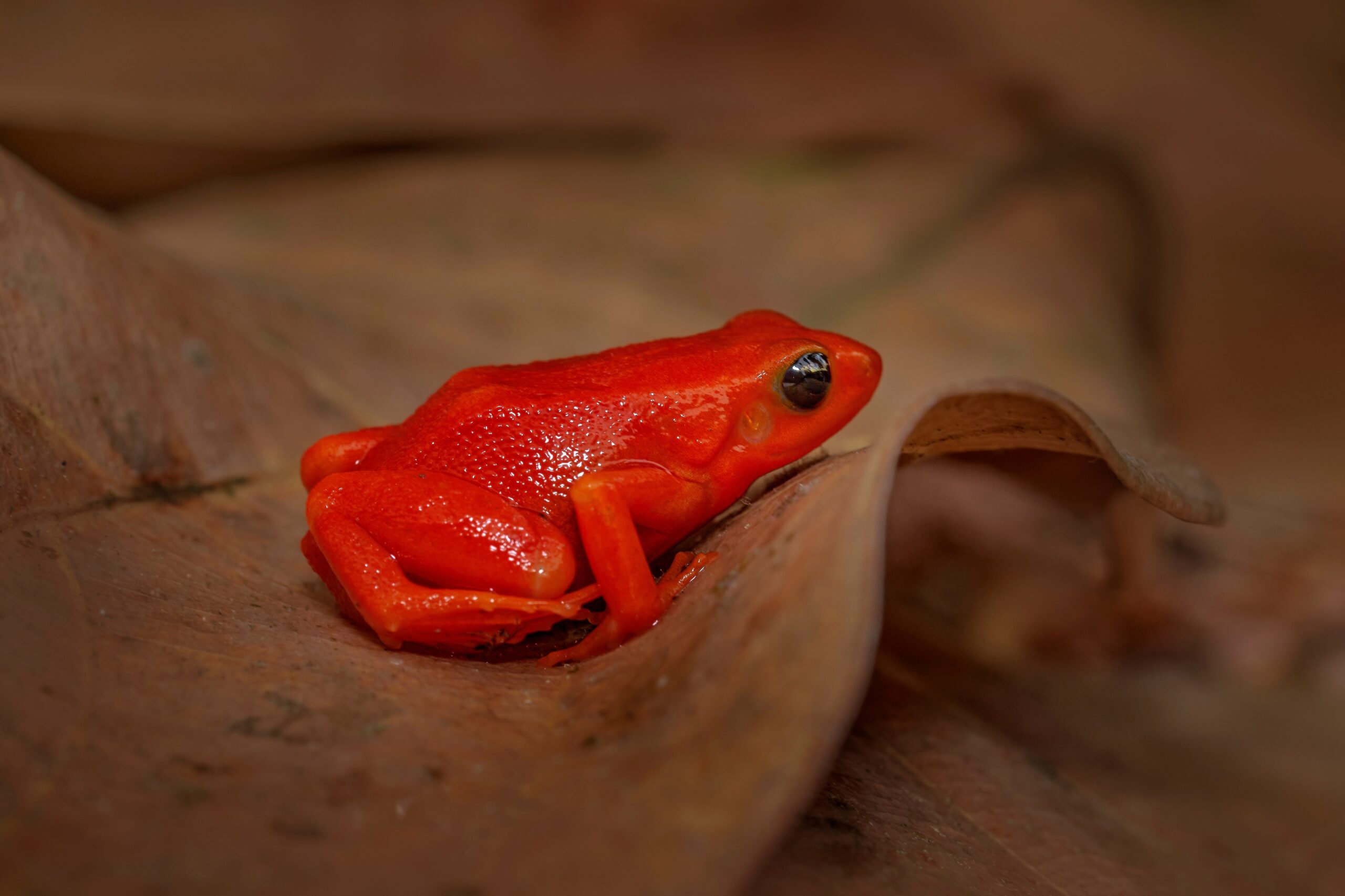
The Golden Mantella Frog is a tiny amphibian with glowing orange-yellow skin. Native to Madagascar, this frog’s radiant color warns of its toxic nature. It’s usually found in moist forest habitats. These frogs are highly endangered due to habitat loss, making their brilliant colors a rare sight in the wild.
Tomato Frog
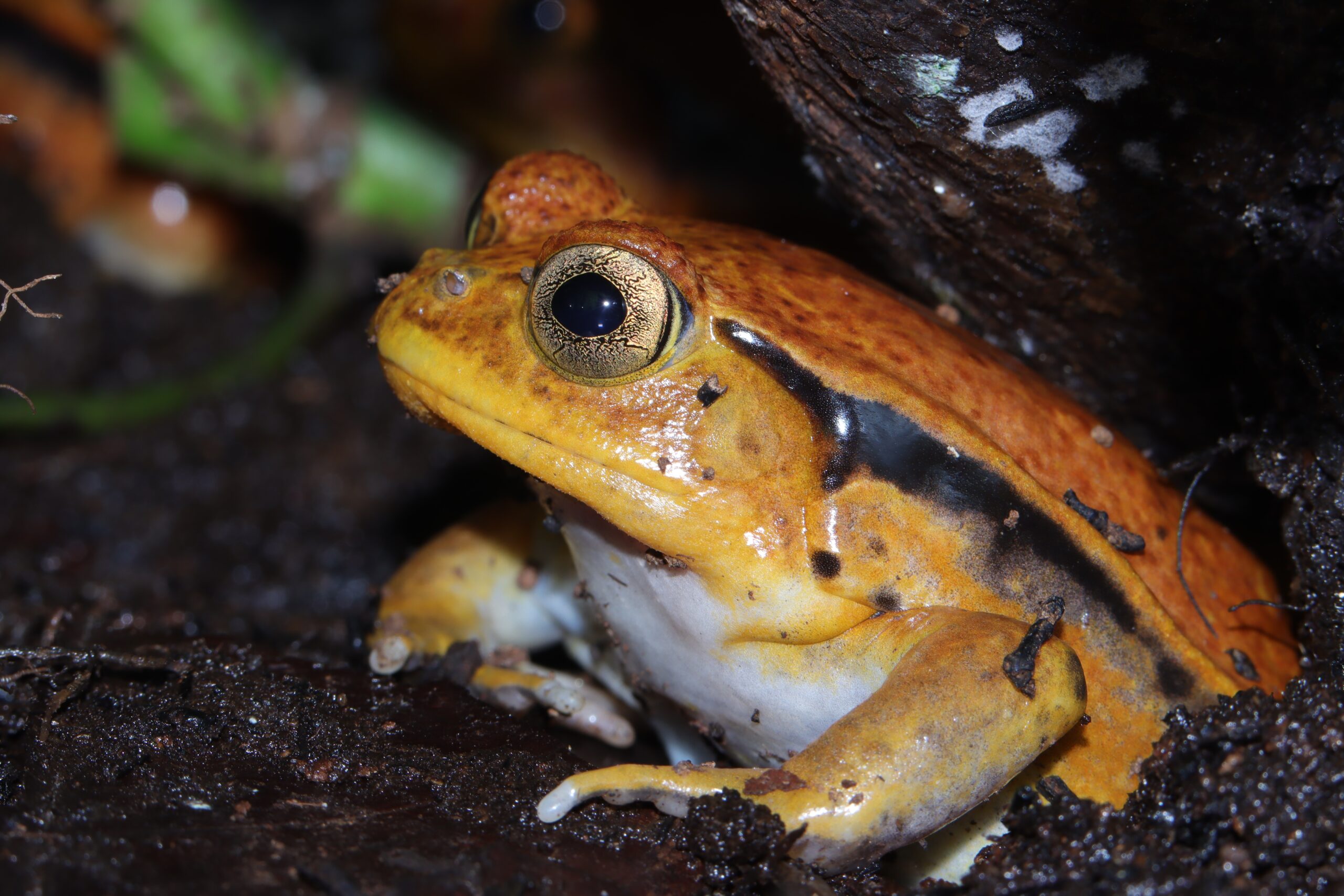
With its bright orange-red body, the Tomato Frog stands out in the forest. Found in Madagascar, it gets its name from its round, tomato-like shape. When threatened, the frog releases a sticky substance from its skin that irritates predators. Its bold colors serve as a warning, helping it avoid attacks.
Green and Black Poison Dart Frog
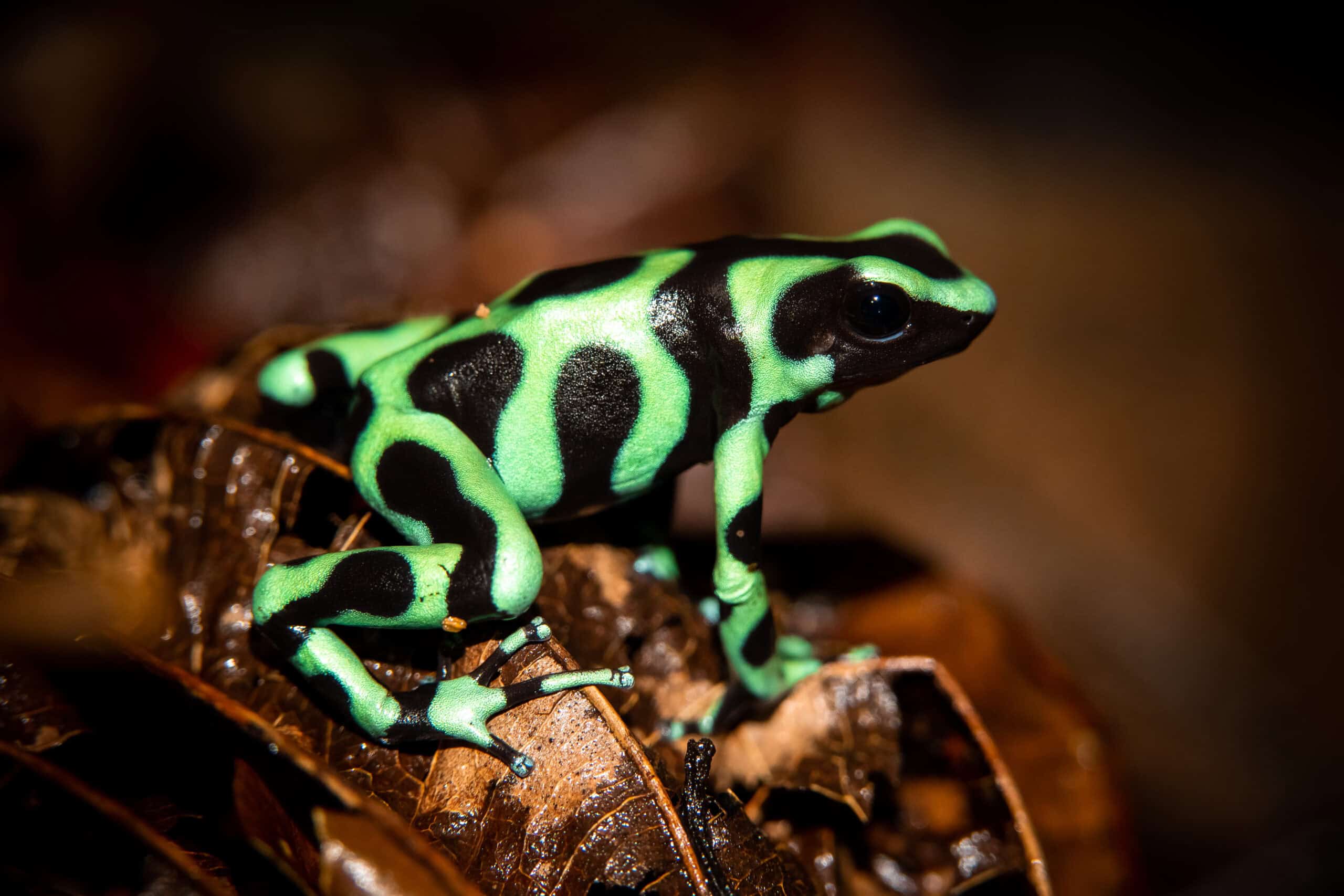
This frog’s skin is a striking combination of electric green and black patches. Native to Central and South America, the Green and Black Poison Dart Frog uses its contrasting colors to deter predators. Its skin contains toxic chemicals, which make it dangerous to animals that try to eat it. These frogs are often found near streams in tropical forests.
Tiger Leg Monkey Tree Frog
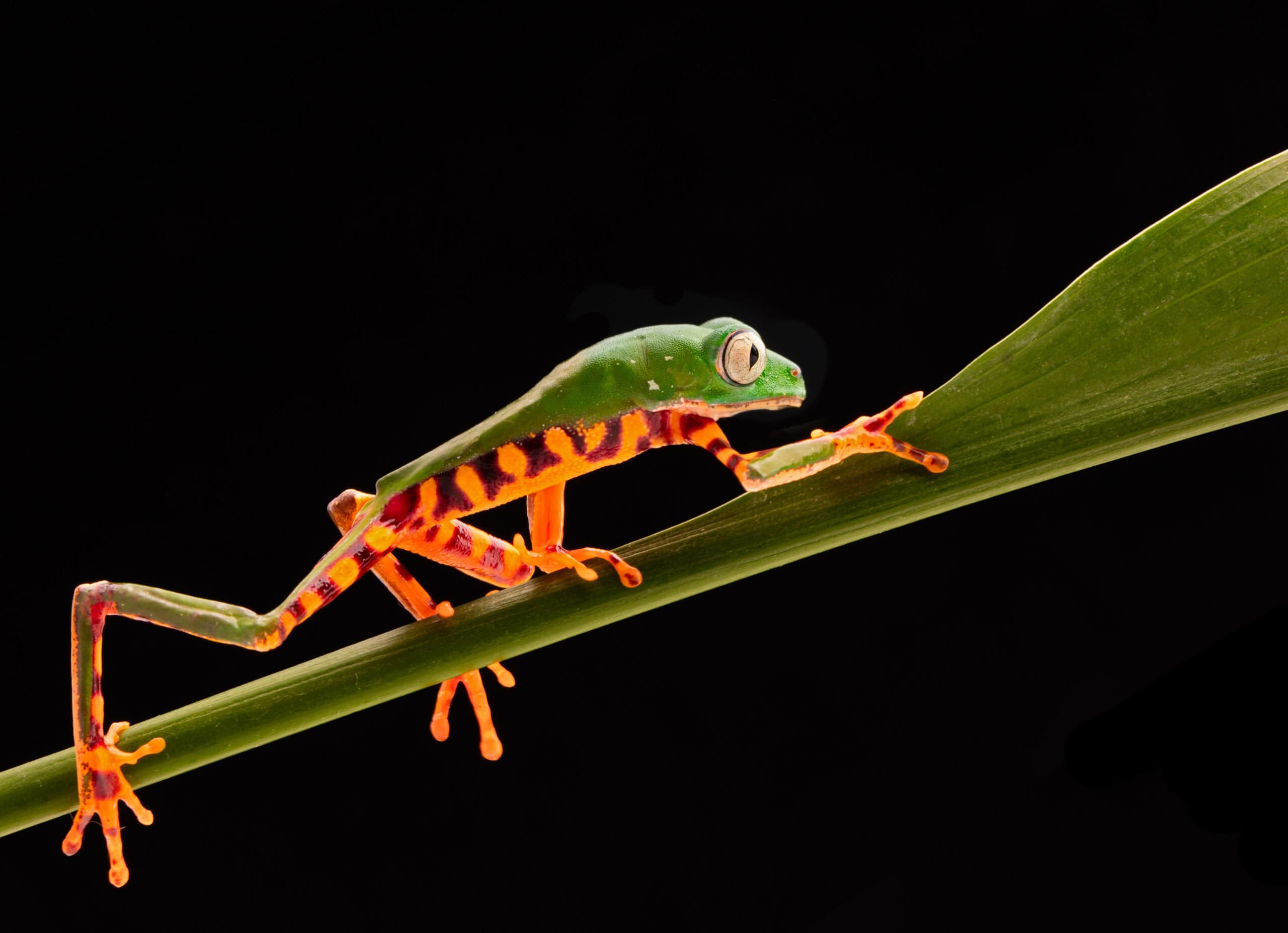
The Tiger Leg Monkey Tree Frog is famous for its bold orange and black stripes on its legs. Its body is a deep green, making the leg stripes stand out even more. Native to the Amazon Basin, these frogs are excellent climbers. Their vivid patterns help them blend into their leafy surroundings, providing camouflage against predators.
Bumblebee Poison Dart Frog

The Bumblebee Poison Dart Frog displays black and yellow stripes, much like its namesake. It inhabits the rainforests of South America. These frogs are highly toxic and use their bright colors to warn potential predators. Their bold appearance not only deters attacks but also helps them blend into the forest floor.
Amazon Milk Frog
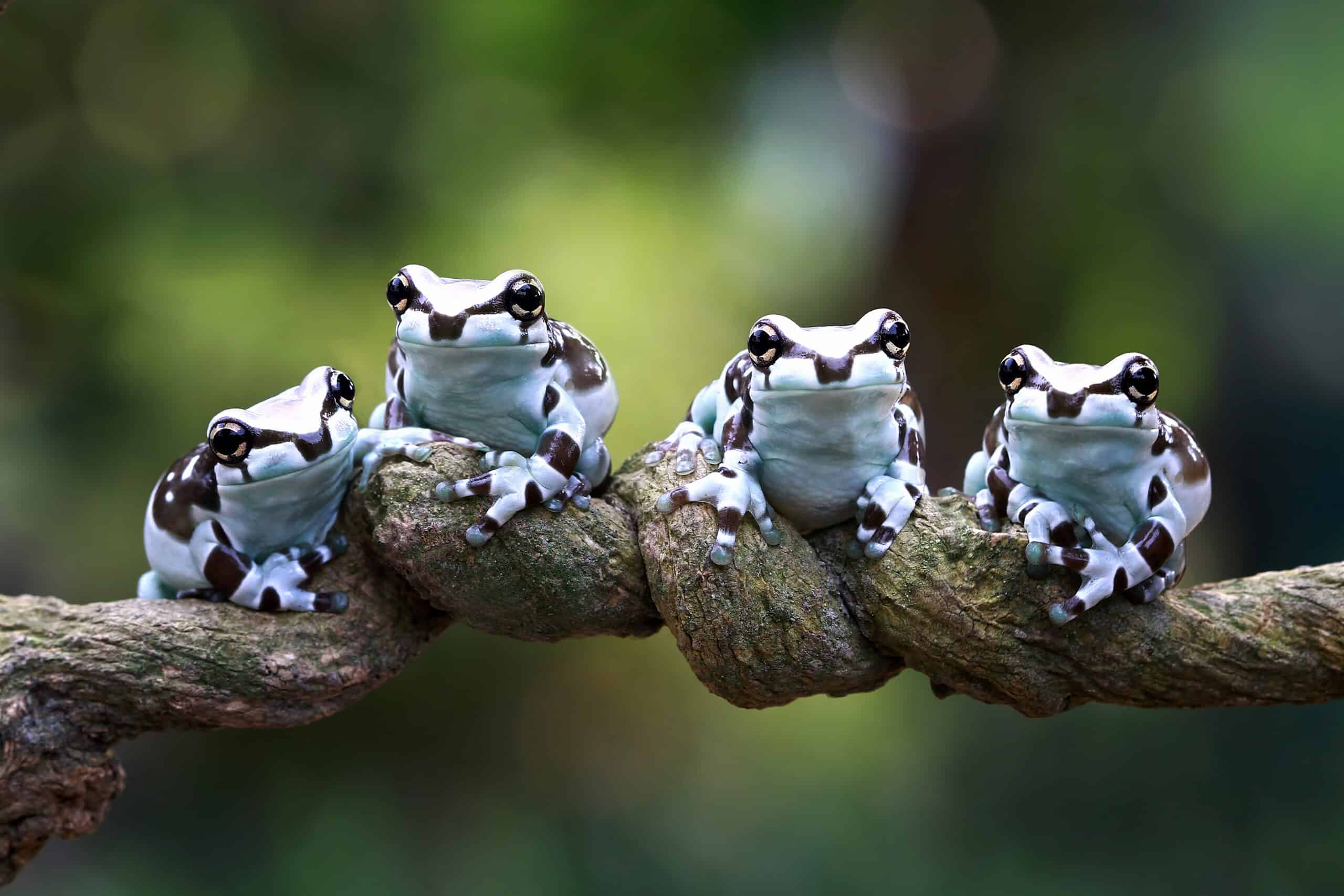
The Amazon Milk Frog has a pale blue-gray body with distinctive black spots. Found in the Amazon rainforest, it secretes a milky toxin from its skin when threatened. These frogs are excellent climbers and spend most of their lives in the treetops. Their light, contrasting colors make them one of the more visually striking species in the rainforest.
Dyeing Dart Frog
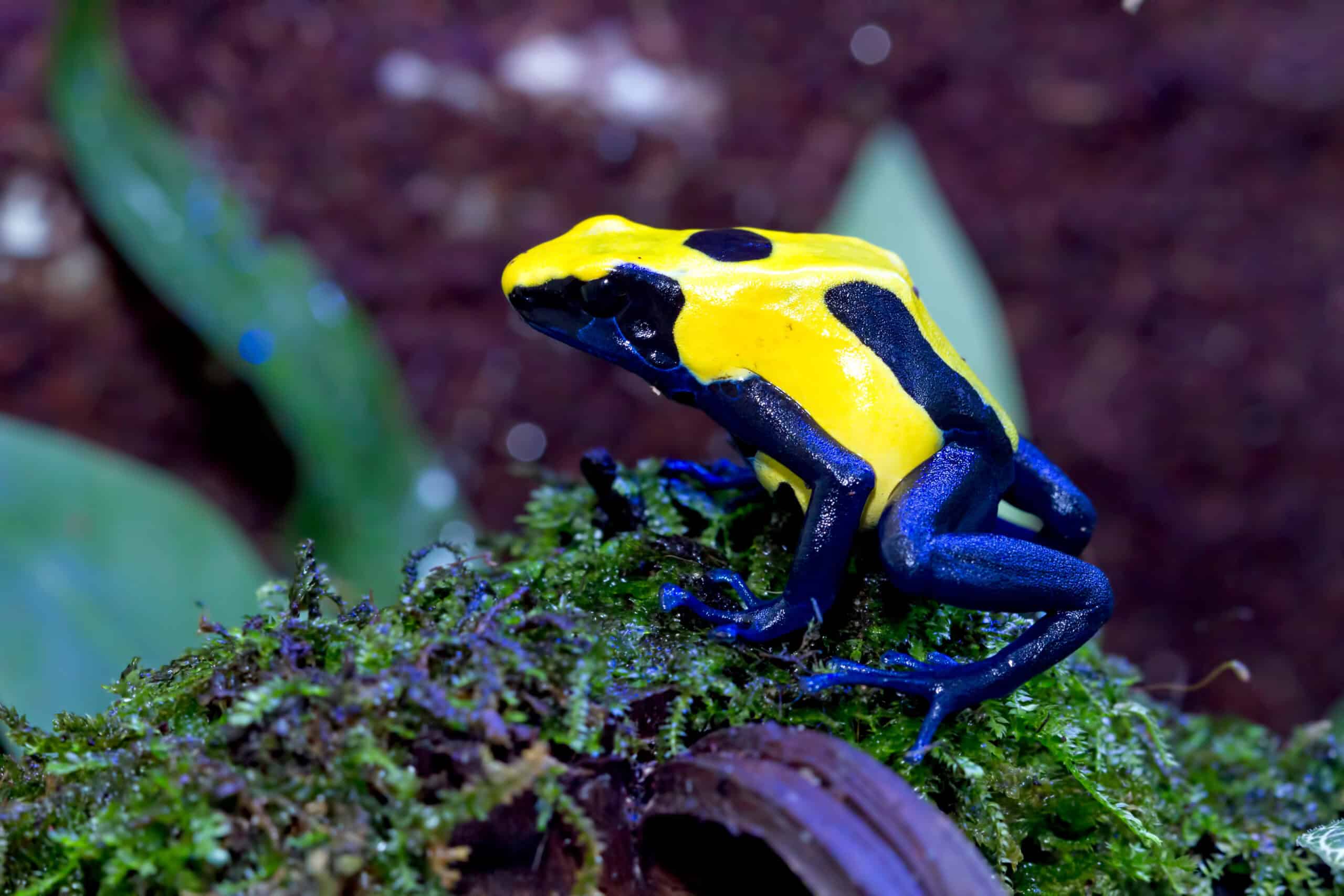
The Dyeing Dart Frog is a visual marvel with its mix of bright blue and black spots. This species is found in the forests of South America, especially in French Guiana and Suriname. The frog’s name comes from a local practice of dyeing feathers using its toxic secretions. Its striking colors are not just for show; they signal danger to potential predators. Despite its small size, it carries a powerful poison on its skin.
Fire Salamander

The Fire Salamander boasts a black body adorned with bright yellow spots or stripes. Native to European forests, this amphibian often hides under logs or leaves during the day. Its bold coloring serves as a warning to predators that it is toxic. When threatened, the salamander can secrete a toxic substance from its skin, making it a dangerous meal for attackers.
Oriental Fire-bellied Toad
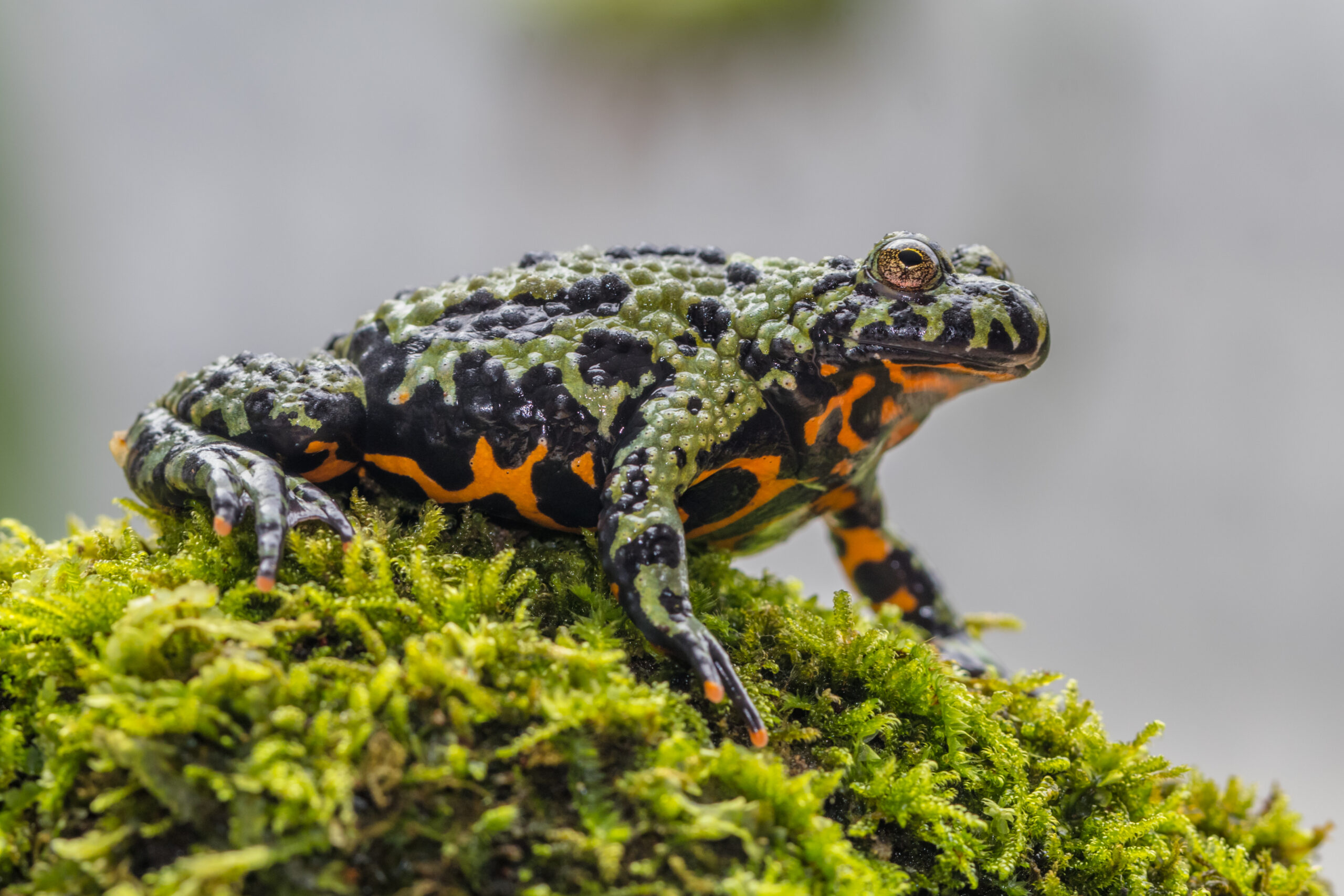
The Oriental Fire-bellied Toad has a vivid green and black patterned back, but its real surprise lies underneath. Its belly is bright red or orange, which it shows when threatened. Found in China, Korea, and parts of Russia, this toad lives near slow-moving waters. Its bright belly acts as a warning to predators that it is poisonous, ensuring its safety in the wild.
Waxy Monkey Tree Frog

This frog has a smooth, waxy green body with pale underbellies and large round eyes. Native to South America, it spends most of its life high in the trees. The waxy coating on its skin helps it retain moisture, allowing it to survive in hot environments. Unlike most frogs, the Waxy Monkey Tree Frog is active during the day, using its bright green color to blend into the leaves.
Purple Harlequin Toad
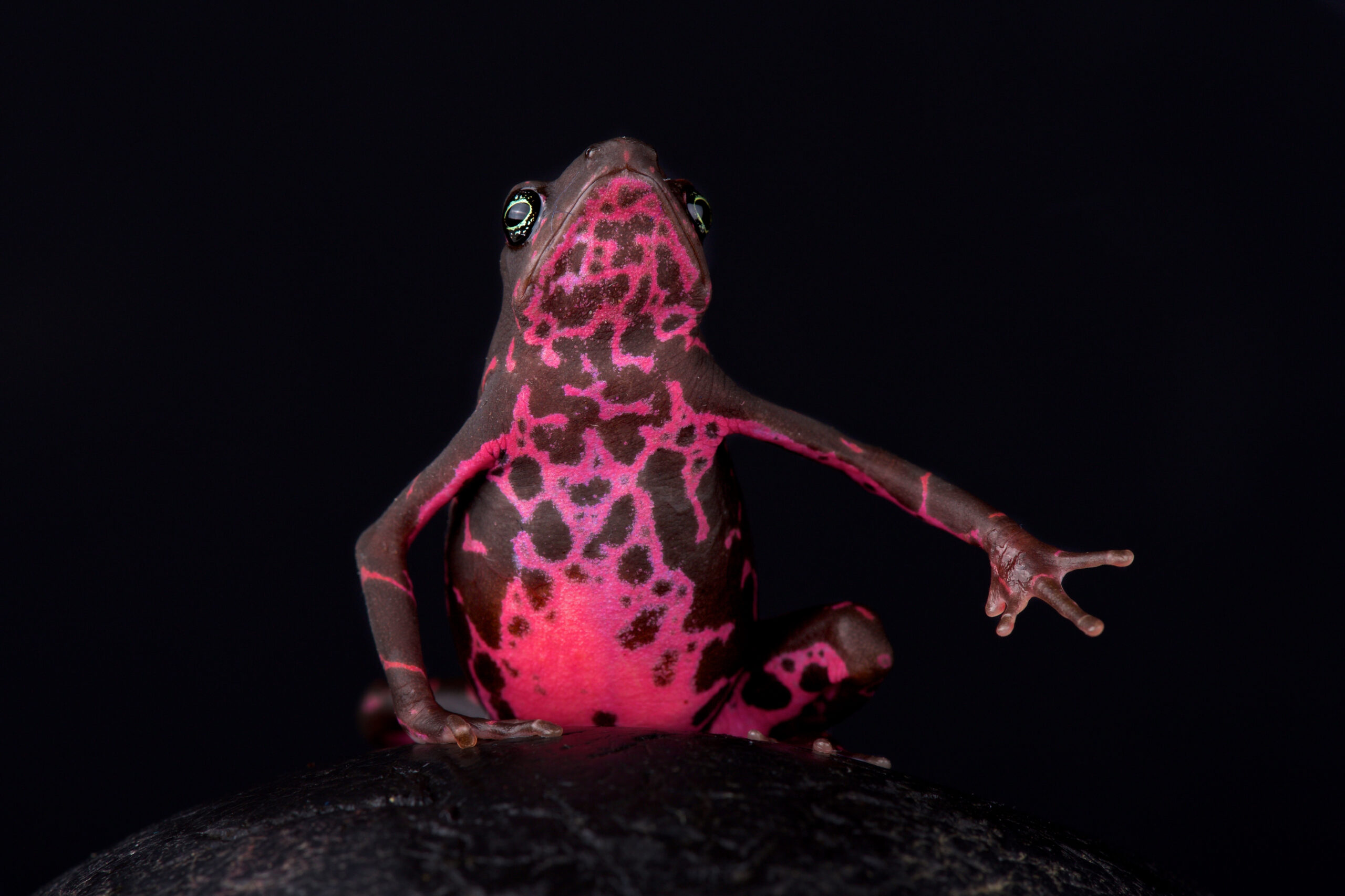
The Purple Harlequin Toad is a rare sight with its deep purple body and bright yellow markings. Found only in Venezuela, this species is critically endangered due to habitat loss. Its vibrant colors make it stand out in the forest, but they also signal danger to predators. The Purple Harlequin Toad secretes toxins from its skin, making it a dangerous prey.
Splendid Leaf Frog
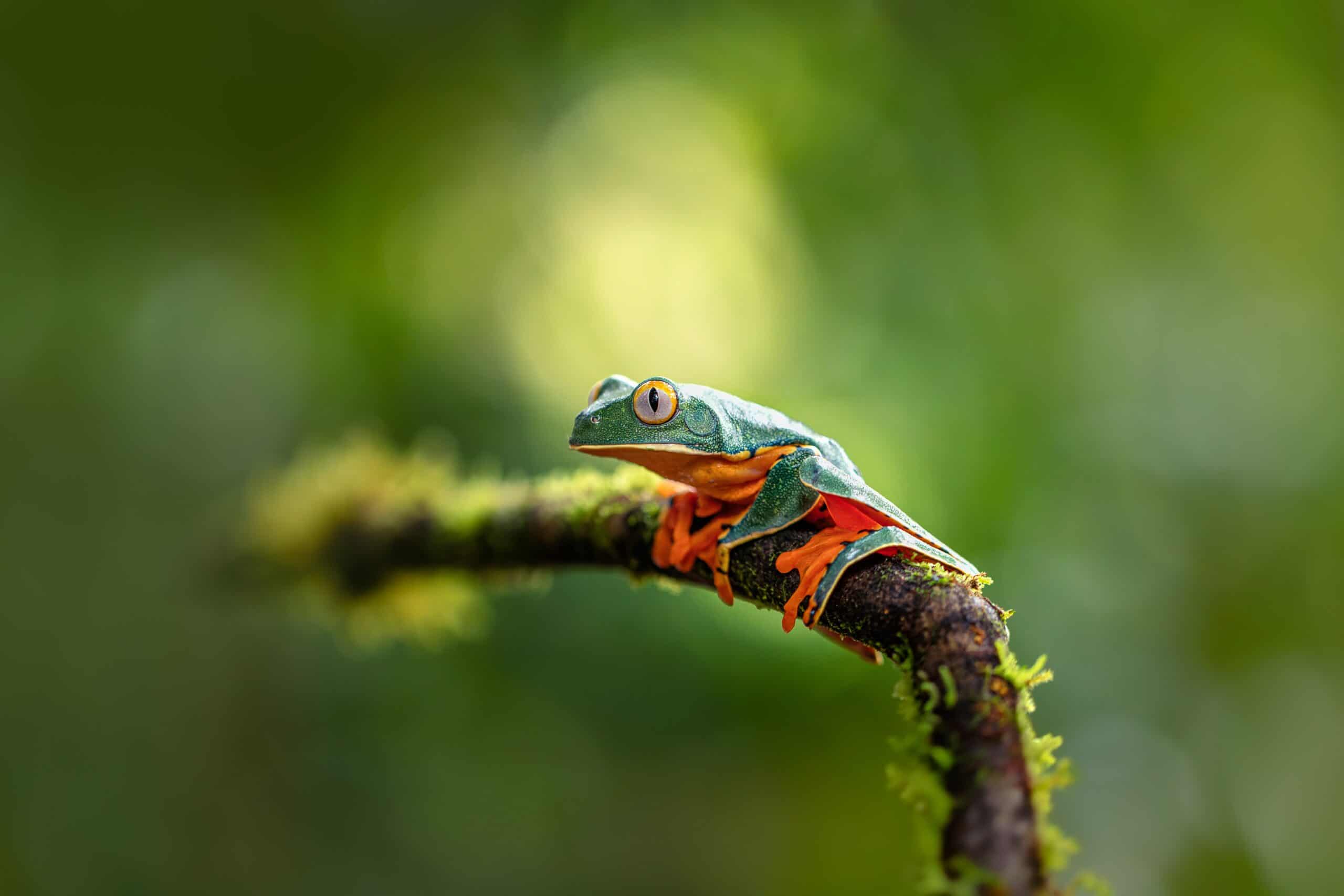
The Splendid Leaf Frog is a stunning amphibian with bright green skin, orange hands, and a blue side stripe. Native to Central American rainforests, it spends much of its life in the treetops. Its colors are a defense mechanism, warning predators of its toxicity. This frog’s large eyes help it see in the dark, making it an excellent nocturnal hunter.
Panamanian Golden Frog
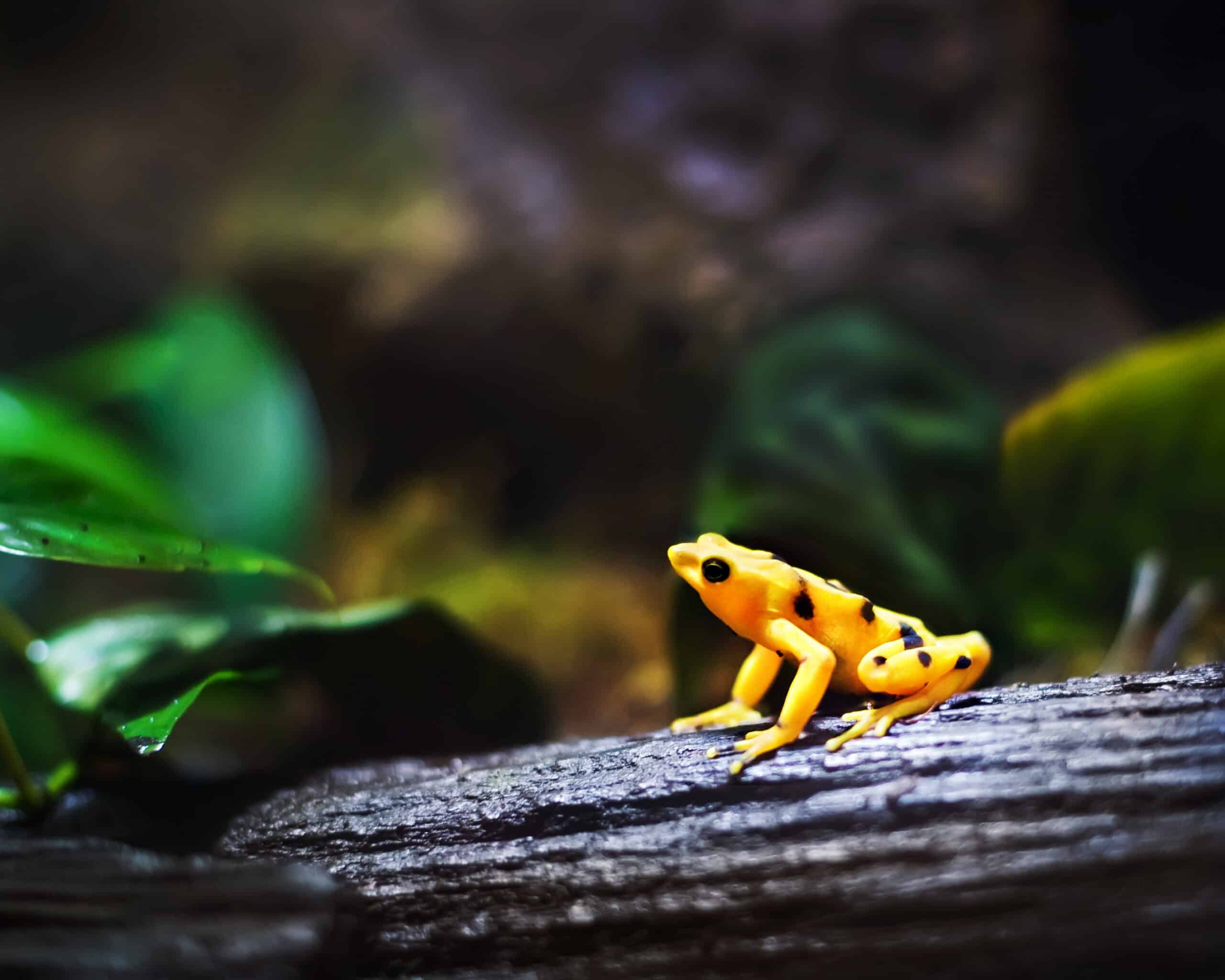
The Panamanian Golden Frog is famous for its bright yellow skin, which contrasts with small black spots. Endemic to Panama, this frog is critically endangered and has become a national symbol. Its color warns predators of its potent toxins, which are among the most dangerous of any amphibian. Despite its vibrant appearance, it is often difficult to spot in the wild.
Green and Golden Bell Frog
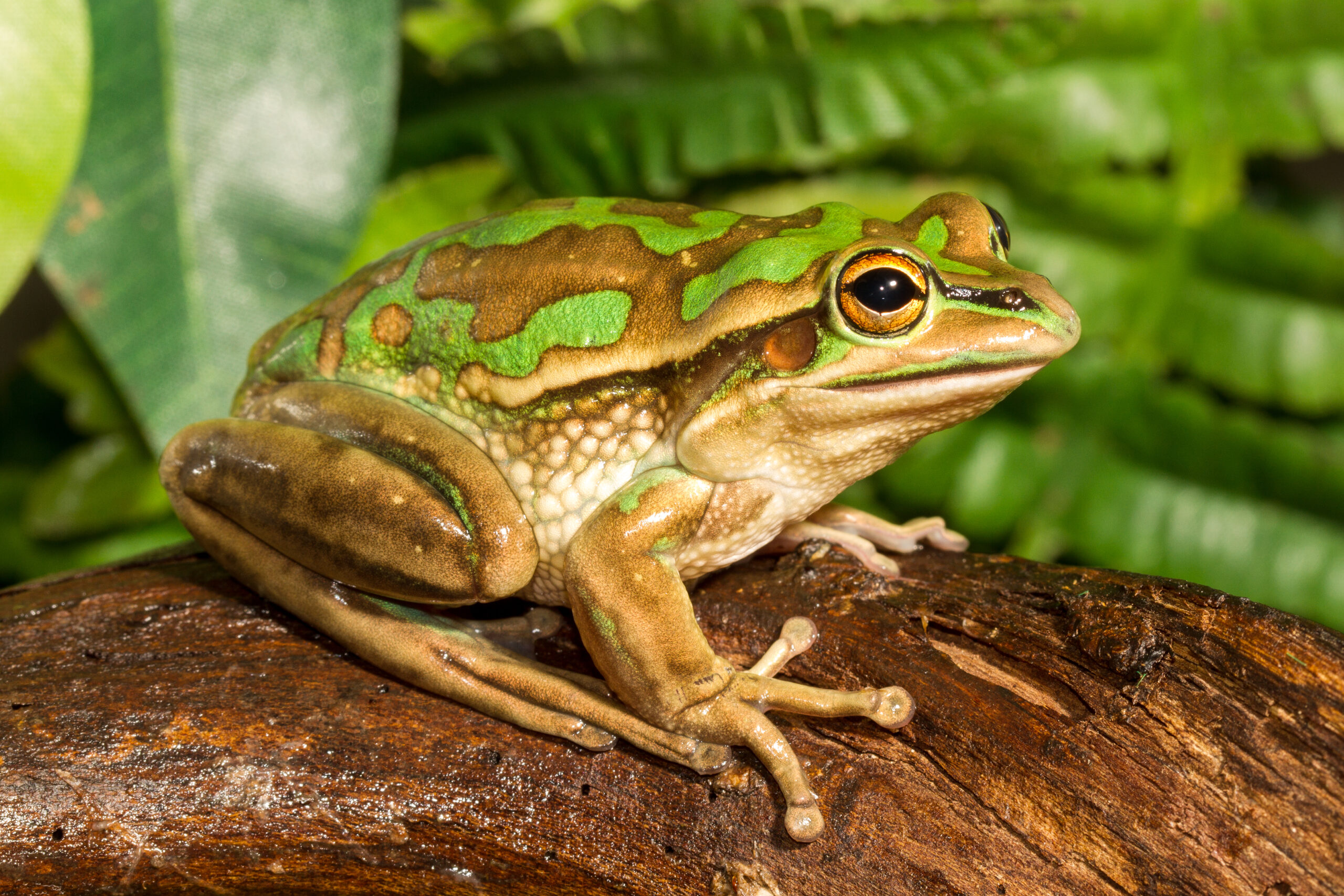
The Green and Golden Bell Frog is a striking amphibian with bright green skin and golden stripes running along its sides. Native to Australia, this frog thrives in wetlands, ponds, and streams. Its vibrant coloring serves both as camouflage in grassy environments and as a warning to predators of its mildly toxic skin. Despite its once-common presence, habitat loss has led to a significant decline in its population, making it a protected species today.
This article originally appeared on Rarest.org.
More from Rarest.org
1986 Washington Quarter Value Guide
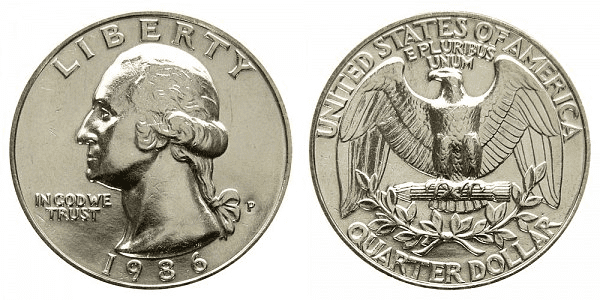
Beginning in 1968, the copper core and 8.33% nickel coating of the Washington Quarters took the role of the silver component. Read More.
1986 Lincoln Penny Value Guide
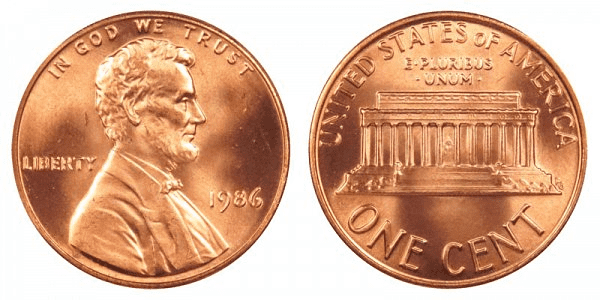
The 1986 Lincoln Penny is very contemporary in terms of coin collection, and it is frequently found in change. Read More.
9 Unique Antique Furniture Pieces Crafted by Master Artisans

Antique furniture carries history, elegance, and exceptional craftsmanship. Each piece reflects the artistry of its time, meticulously crafted by master artisans. Read More.
